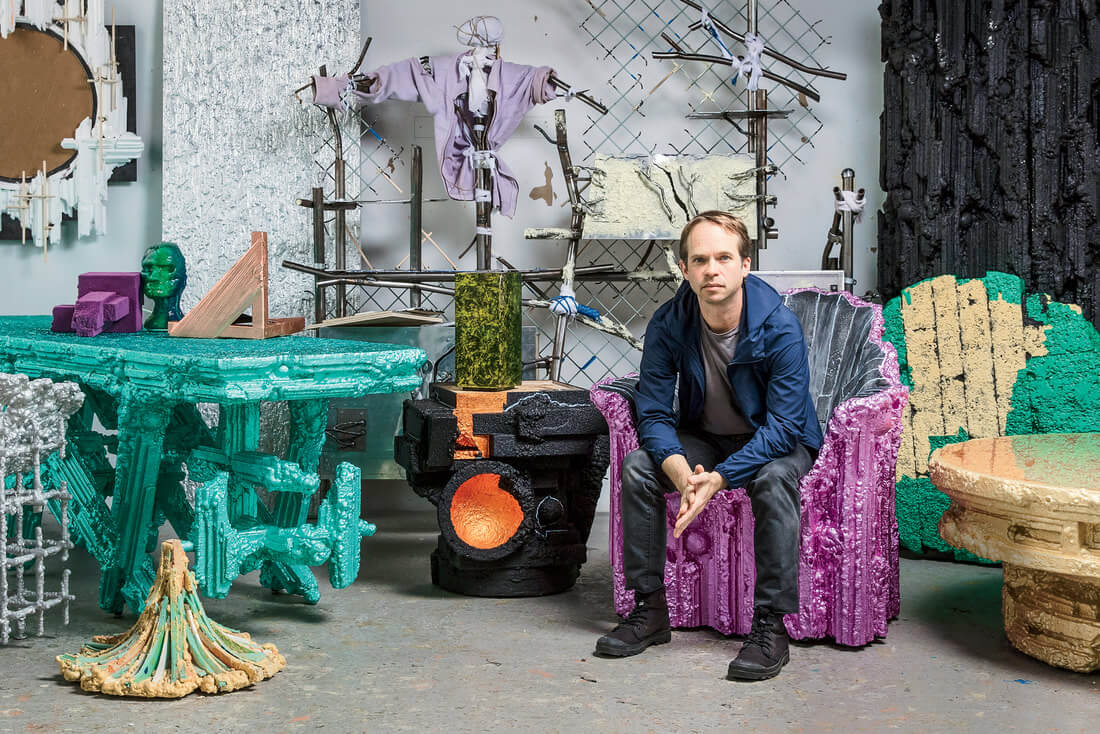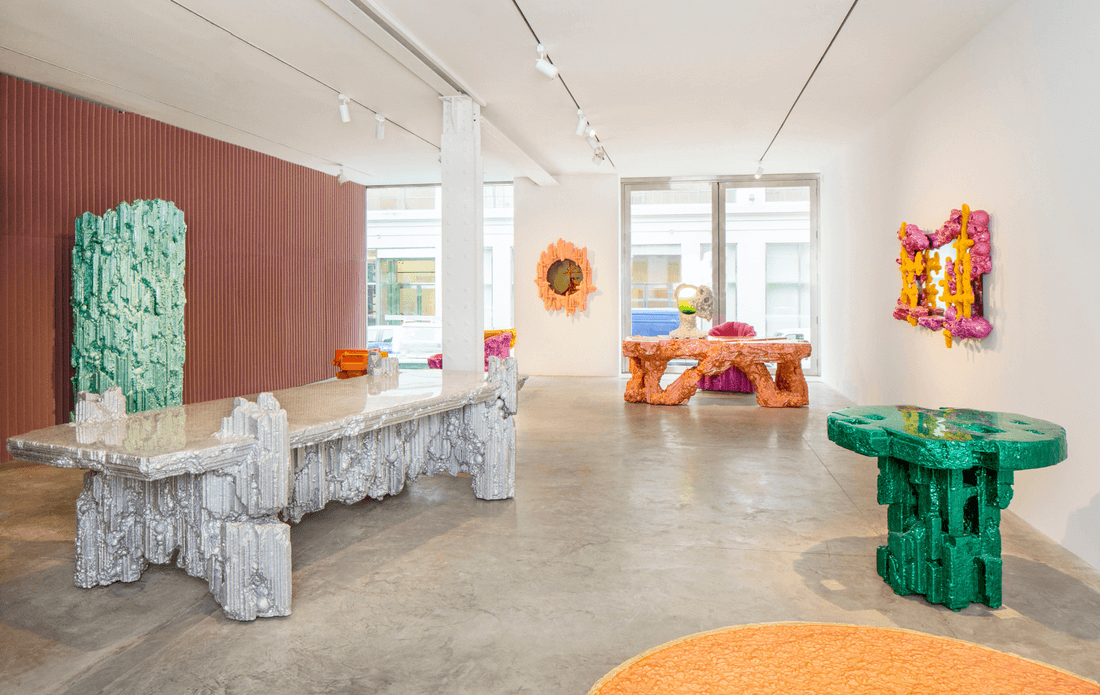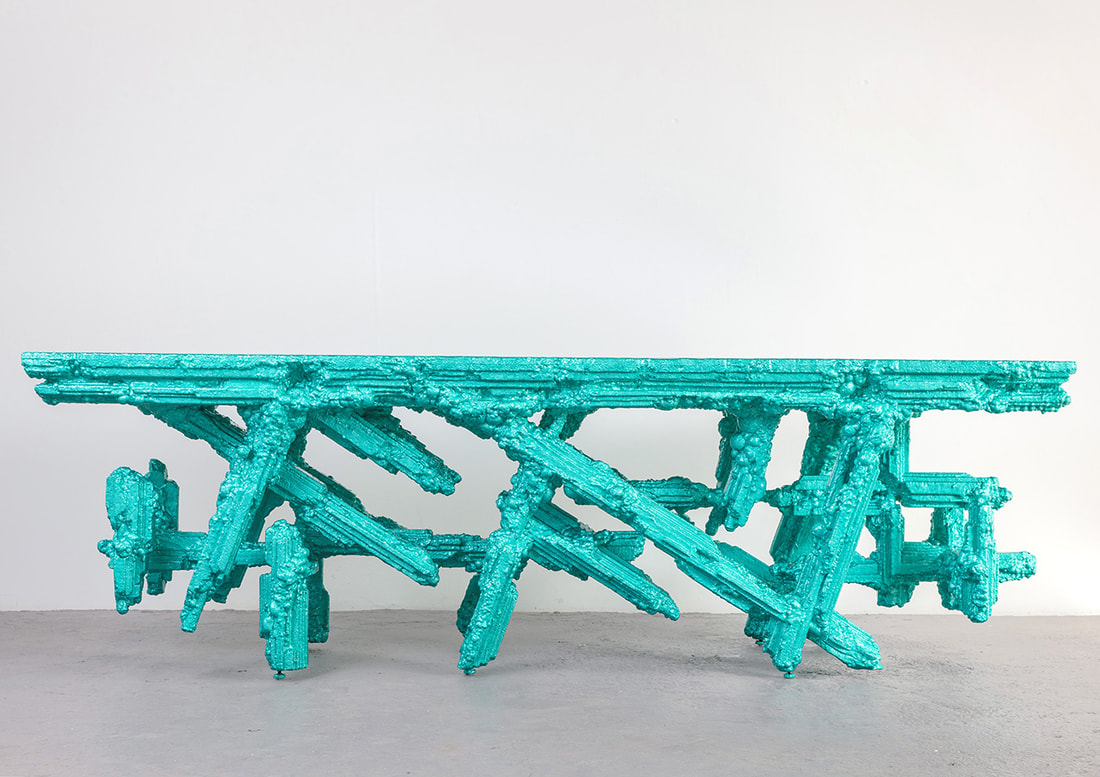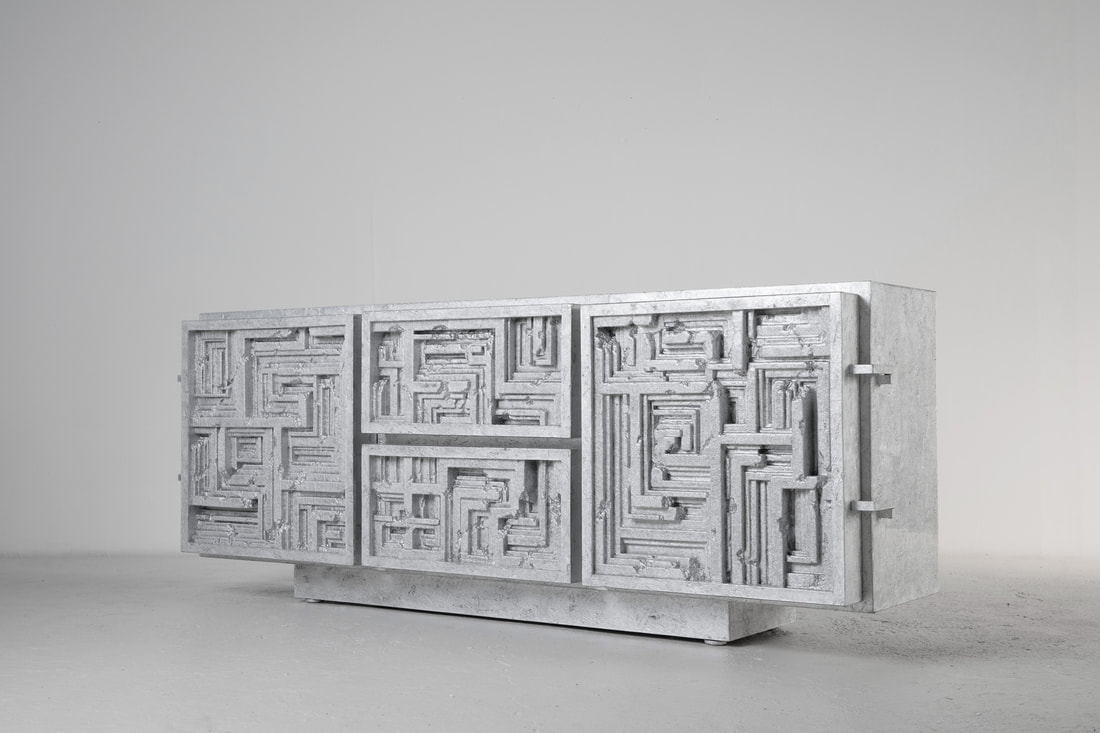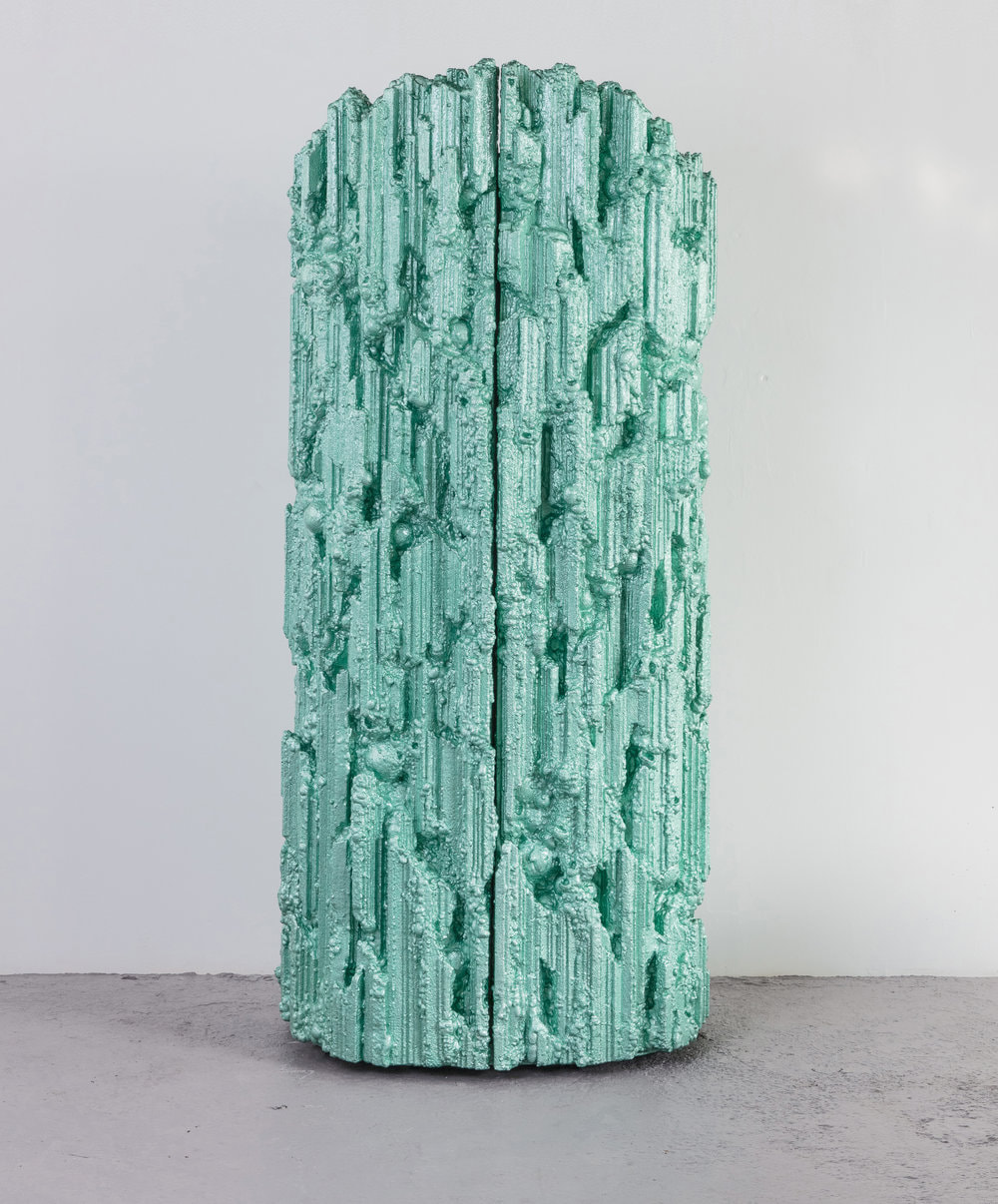I have invited him to speak in the program Collecting Design this morning in my quest to illuminate the world of contemporary design and to inspire my audience to develop sophisticated taste and to elevate their understanding of design.
When you look at Schanck’s pieces, do not think about a ‘chair’ or a ‘table’ in the traditional way. His furniture is much more complex than the function they come to fulfill, not to say that they are not fully functional and comfortable. Yet, to understand his pieces, you must study them in depth, and only then, you can experience this design to its full significance. The top layer is the beauty of the pieces, which are colorful, interesting in form, each reminds you of a piece of jewelry. But then, when you look beyond that outer layer, you discover an entire world. Not one, but several worlds. And many contradictions, too. It took me a couple of years to fall in love with his work.
You would be surprised to discover that these jewels, that look as if they are made in precious metals, are in fact sustainable, crafted of recycled, found, discarded materials, the poorest of the poor. Branches of wood collected in the neighborhood; remnants of construction materials found in dumpsters; chunks of industrial staff, all sculpted into extraordinary, irregular, imaginative forms. Once the foundation is formed and stabled, the piece is coated with a primer substance, which acts as the base for aluminum foil, which is applied onto the surfaces in the most labor-intensive process that may talk up to thousands of hours to complete.
Low tech processes that are created in a community, another important aspect of the work, created in Schanck’s studio. Not only does he explore the streets for inspiration and for fining his materials, but also he employs the skills of the ethnic community. Living in the Banglatown, a neighborhood of Detroit, which is the home of one of the nation’s densest clusters of Bangladeshi-American, plays a key role in the vernacular aspect of his work. Women of this community, working in the studio apply their skills in textiles to the process of applying foil.
In celebrating the 50th Earth Day today, acknowledging those keepers of this planet, I would like to illuminate Chris Schanck. His work is a synthesis of art, craft and design; of unique craftsmanship, narrative, and symbolism; of the figurative and the abstract; the rustic and the refined; fantasy and function; inventiveness; and vernacular. It demonstrates the complexity of creating the ‘contemporary,’ its self-expression and statement on the state of our planet.
Images courtesy Friedman Benday and Studio Chris Schanck.

